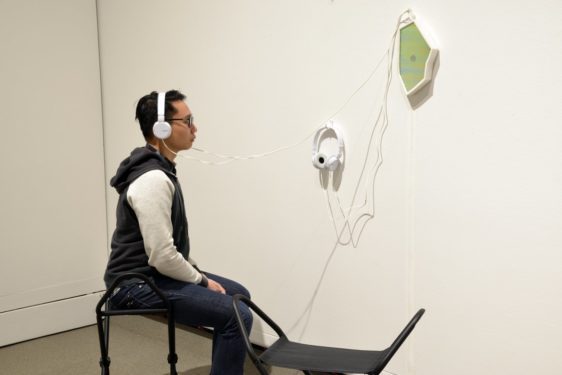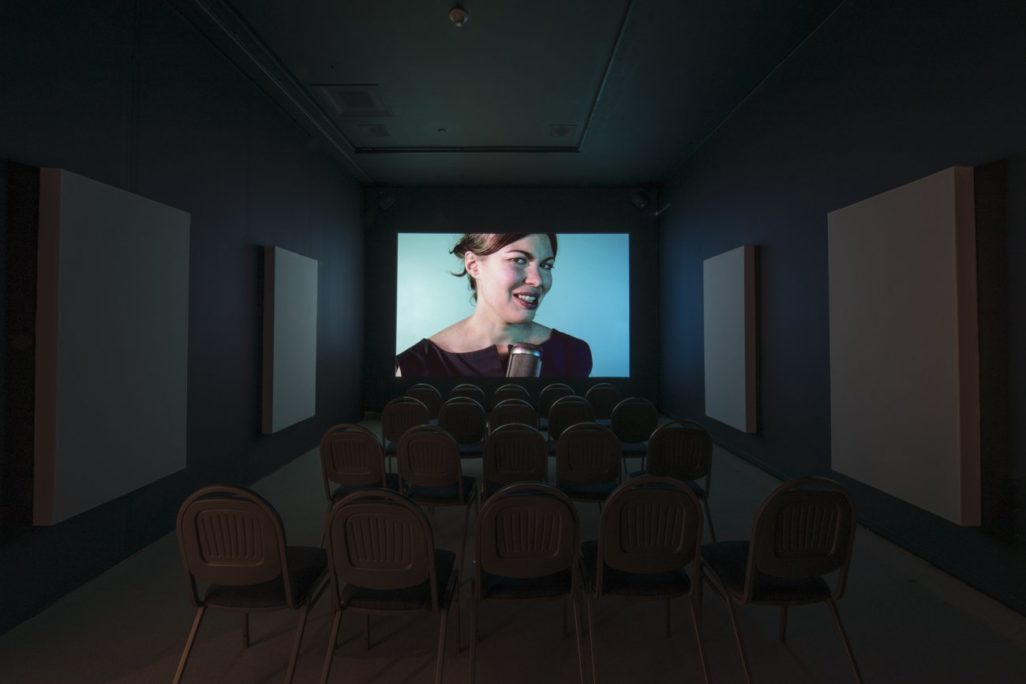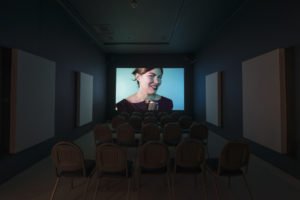Curated By
Tak Pham
Organized & Circulated By
MacKenzie Art Gallery, in partnership with the University of Regina
Galleries
Sim Gallery
About the Exhibition
“What are the parallels between human and computational sensory systems?” is the question at the centre of Erin Gee’s research. Deeply invested in revealing the functional parameters of emotion, she works against dismissive attitudes that contrast emotion with logic. Gee suggests that “emotion has a real biological function to help us remember, help our bodies react to adversity, to reward us in times of comfort.” Her works translate bodily responses into machine-augmented experiences. The technologies employed—such as audio and sensor electronics act as metaphors for the human body and emotional systems, revealing the physiological processes that underlie our emotional states. Her robots, software, and compositions distort, transform, enhance, and communicate feelings and emotions as reflected in the biorhythms of our body, such as heartbeats, sweat, and vibrations in the larynx, giving visible and audible presence to feelings of intimacy, affect, and fear, as well as more abstract emotions that are not always easy to identify or validate.
As Literature Professor N. Katherine Hayles observes in her 2017 book Unthought: The Power of Cognitive Consciousness, “The same faculty that makes us aware of ourselves as selves also partially blinds us to the complexity of the biological, social, and technological systems in which we are embedded, tending to make us think we are the most important actors and that we can control the consequences of our actions and those of other agents.”
Gee’s computationally-generated symphony of emotions composed of bio-feedback illustrates the consciousness bias that we carry and suggests the potential connections that we might make with each other—both human and non-human entities. Growing out of this relationship, self-centered humans can find a path to a humble co-existence and shared responsibility.
Gee’s research-driven artworks allow us to break free from an egocentric understanding of thought-processes that prioritize the brain, in order to see how the rest of the body thinks, feels, and reacts.
WORKS IN THE EXHIBITION
Machine Unlearning
2018 – 2020
Video, 30:00
Playing the role of a therapist in this video, Gee welcomes viewers to experience a speculative neural treatment called “language processing and de-processing.” Addressing viewers as if they had chip implants behind their necks, Gee introduces them to the many benefits of this audio treatment, which can awaken underdeveloped neuro-linguistic pathways through exposure to the non human algorithm of neural network language acquisition. Similar to to the sooe, Gee reads the text produced by the Machine Unlearning algorithm which has familiarized itself with Emily Brontë’s Wuthering Heights in order to generate strings of sensory pleasing acoustic triggers as the algorithm’s memory slowly degrades.

Erin Gee, A co-creation with Sofian Audry, "to the sooe", 2018. 3D-printing, laser etching, and audio recording. MacKenzie Art Gallery, 2020. Photo by Don Hall.

Erin Gee, "Swarming Emotional Pianos", 2012 - 2020. Aluminum tubes, servo motors, custom mallets, Arduino-based electronices, iCreate platforms, and video. MacKenzie Art Gallery, 2020. Photo by Don Hall.

Installation view, "Erin Gee: To the Sooe". MacKenzie Art Gallery, 2020. Photo by Don Hall.
ABOUT THE ARTIST
Based in Montréal, Regina-born media artist and composer Erin Gee looks for human voices in electronic bodies. Articulating a feminist-materialist strategy for creation with digital tools, Gee accesses technology through the human body and its voices. She likens the micro-rhythms of emotion in the body to the rhythms of a vibrating vocal fold, exposing the material of affect as an embodied and embedded communicative tool.
Gee’s work in biosignal-driven choral composition, virtual reality, and robotics has been shown at numerous venues internationally including: Toronto Biennial of Art, Toronto (2019); FILE festival, São Paulo, Brazil (2019); Cluster Festival, Winnipeg (2019); Ars Electronica, Linz, Austria (2018); NRW Forum, Düsseldorf, Germany (2018); Trinity Square Video, Toronto (2017); MediaLive Festival, Boulder, Colorado (2017); and Musée d’art contemporain de Montréal, Montréal (2015 ). Gee graduated from the University of Regina with a Bachelor of Music Education in 2006 and a Bachelor of Fine Arts in 2009, and from Concordia University with a Master of Fine Arts in 2014. Gee is currently pursuing a Doctorate in music at Université de Montréal.

Events
-
![]()
Special Programming
Shary Boyle: Outside the Palace of Me Spotlight Tour with Sylvia Ziemann
20 April 2024
-
![]()
Studio Sunday
Puppet Workshop with Sylvia Ziemann
21 April 2024
-
![Three figures march through the winter snow carrying a transparent canoe shaped structure that glows from the inside.]()
Studio Sunday
It’s 2050: Sci-fi comics
28 April 2024




